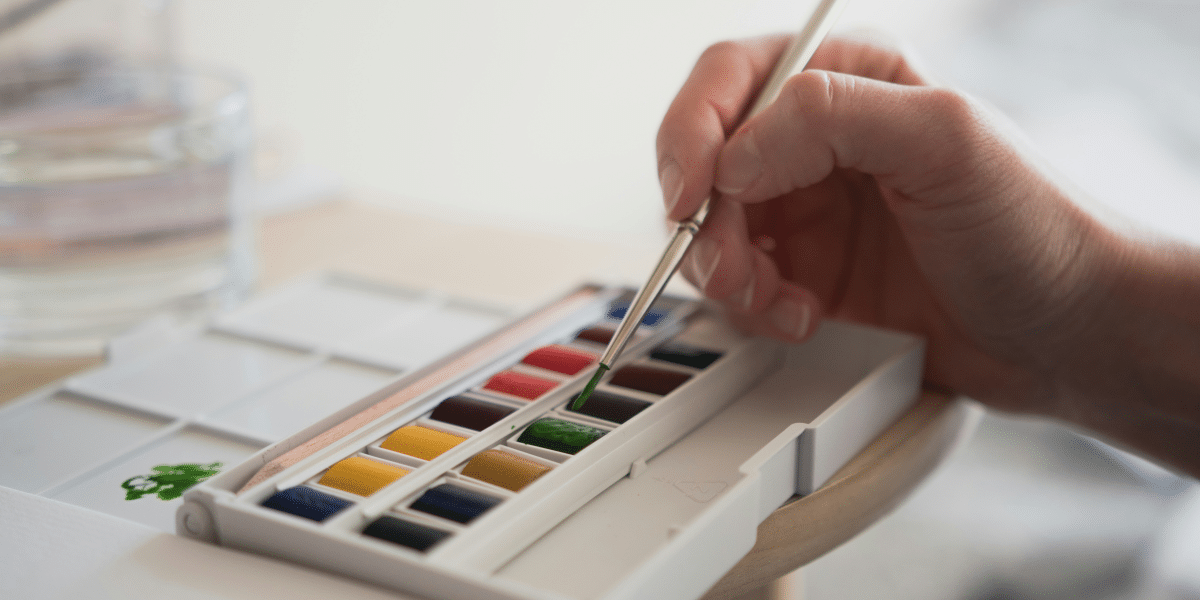Watercolor painting, with its translucent and ethereal qualities, is a medium that continues to captivate artists and art enthusiasts worldwide. Known for its delicate interplay of water, pigments, and paper, watercolor creates luminous, fluid artworks that capture the light, shadow, and atmosphere of a scene. This unique painting technique invites both meticulous control and spontaneous creativity, making it one of the most dynamic and accessible forms of visual art.
The Science Behind Watercolor Painting
At its core, watercolor is a simple yet powerful medium that uses water-soluble pigments. When mixed with water, these pigments flow across paper, creating a fluid, translucent effect. The transparency of watercolor allows light to pass through the paint layers, reflecting off the paper’s surface and giving the artwork its signature glow. This process makes watercolor distinctive from other painting mediums, such as oils or acrylics, which tend to be more opaque.
The beauty of watercolor lies in its ability to build depth through layering. Artists can apply light washes of color that gradually accumulate into rich, complex hues. The inherent unpredictability of the medium, combined with its fluid nature, challenges the artist to balance control with spontaneity.
Techniques and Tools in Watercolor Painting
Watercolor offers a variety of techniques that artists use to achieve different effects. One of the primary techniques is wet-on-wet, where wet paint is applied to a damp surface, allowing colors to blend seamlessly, creating soft edges and fluid transitions. In contrast, wet-on-dry involves painting wet pigment onto dry paper, offering more control and sharper lines, making it ideal for detail work and defined shapes.
Beyond these foundational techniques, artists often use lifting, glazing, and masking to modify or protect areas of their artwork. Lifting removes pigment from a wet or dry surface, while glazing involves layering transparent washes to modify the color or tone beneath. Masking allows artists to preserve areas of the paper from paint, resulting in sharp, unpainted highlights.
Brushes are an essential tool in watercolor painting, with various types designed for specific applications. Round brushes are versatile, ideal for washes, details, and precise strokes, while flat brushes are perfect for bold, wide strokes and sharp edges. Additional tools like sponges, masking fluid, and even salt can create textures, adding depth and interest to watercolor compositions.
Capturing Light, Color, and Emotion
One of the most captivating features of watercolor painting is its ability to capture light and atmosphere. The transparent nature of the medium allows artists to depict the subtleties of light and shadow, creating a sense of depth and volume. Whether painting a misty morning, a glowing sunset, or the soft play of light through leaves, watercolor can evoke an emotional connection with the viewer. The gentle, flowing quality of watercolor lends itself particularly well to serene, tranquil scenes that invite contemplation and quiet reflection.
Watercolor’s emotive potential is also reflected in its diverse range of applications. For example, the soft blending of hues can create a calm and peaceful effect, while bold, vibrant colors can evoke energy and passion. This versatility makes watercolor suitable for a broad range of subjects—from landscapes and portraits to abstract compositions.
Watercolor as a Versatile Medium
Watercolor’s flexibility extends across various artistic styles. Realism is one area where watercolor excels. Through careful layering, artists can achieve a lifelike representation of scenes and objects, with the transparency of the medium enhancing the depth and dimensionality of their work. The precision in shading and detailing allows for an extraordinary realism, particularly when capturing the play of light on water or glass, or the texture of natural elements like flowers and foliage.
On the other hand, watercolor also offers a platform for expressionistic and abstract works. The fluid nature of the medium allows for spontaneous expression, where colors mix, bleed, and interact in unexpected ways. This unpredictability invites artists to explore new forms and ideas, offering a space for creative freedom and experimentation.
Artists can also incorporate mixed media into their watercolor work, adding other elements such as ink, pastels, or graphite to create more texture and contrast. The adaptability of watercolor ensures that artists can continually evolve their practice and expand their visual vocabulary.
The Enduring Appeal of Watercolor
Watercolor painting holds a unique place in the history of art. Its ability to capture the fleeting beauty of nature—such as the gentle flow of a river, the delicate bloom of a flower, or the shimmering quality of a sunset—has made it a favorite among artists for centuries. The medium’s subtlety and complexity make it ideal for depicting scenes of quiet contemplation, providing an antidote to the fast-paced world around us.
Even in today’s digital age, watercolor’s appeal remains strong. The tactile nature of working with physical materials, along with the ever-evolving techniques and technologies available to artists, ensures that watercolor continues to inspire both seasoned painters and those new to the medium. Whether creating intimate works in the studio or larger, public art pieces, artists are continually discovering fresh ways to push the boundaries of watercolor.
As the art world moves forward, watercolor maintains its timeless appeal. Its rich history, versatility, and emotional depth ensure its place as one of the most enduring forms of artistic expression. Whether as a tool for meticulous representation or spontaneous creativity, watercolor continues to be a medium of choice for those who seek to capture the beauty of the world in its most luminous form.
The Timeless Art
Watercolor painting remains a highly revered and versatile medium that blends technical skill with artistic expression. It allows artists to explore a vast range of techniques and styles while maintaining a unique, luminous quality that continues to captivate viewers. As watercolor continues to evolve, its timeless appeal ensures it will remain a central medium in the world of visual art for years to come.
Published by: Martin De Juan








